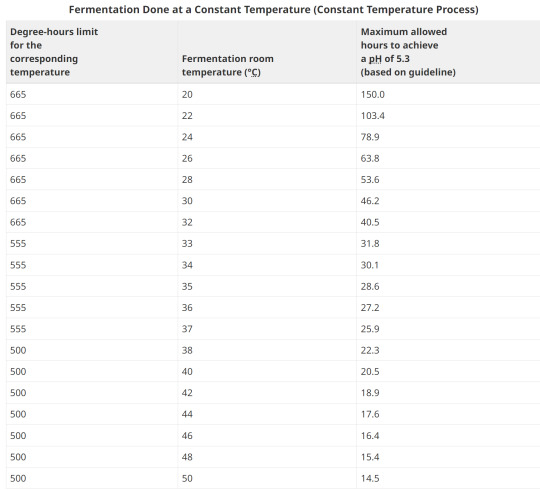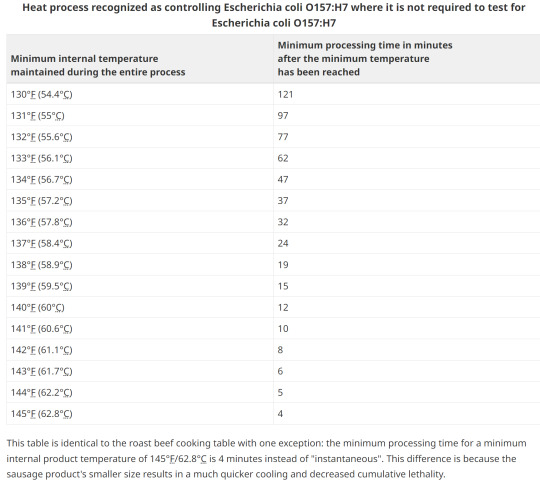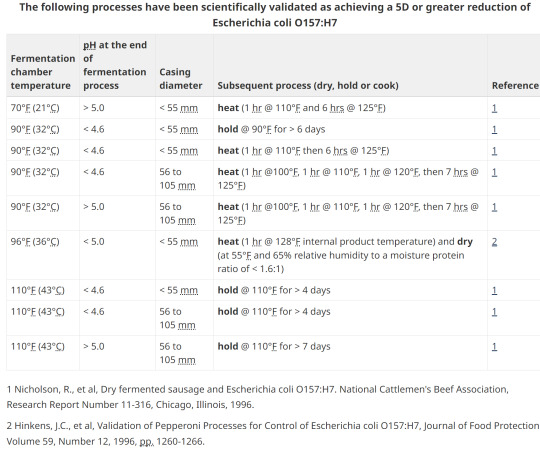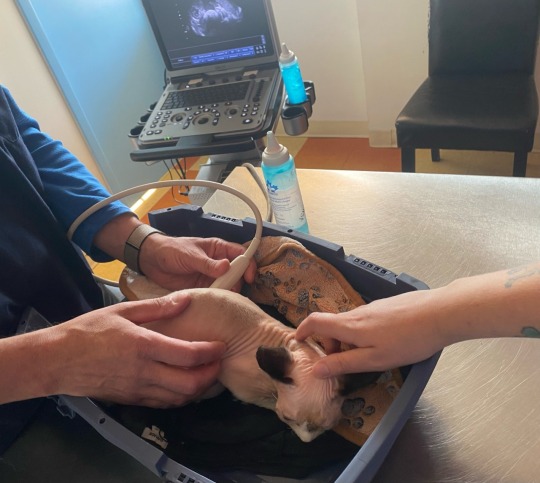#pathogen testing
Explore tagged Tumblr posts
Text
I now have TWO supervisors for my thesis and will be doing a LOT of labwork.

#genuinely all I wished for#will be germinating spores and isolatint plant pathogenic fungi for testing 💖#also TWO supervisors#usually you only have one but I guess they were so happy to have me LMAO I'll be having my teacher and a post-doc lady#they're both super sweet#I still don't know if I'm more interested in plant breeding or microbiology but I feel like there's some overlap#except for the genetics part#but I think I'm leaning more towards microbiology and plant pathogenics#and I will be in the LAB YES 💅🏾💖#studyblr#studyspo#college#university#studying#studying motivation
3 notes
·
View notes
Text
#Liver disease#Hepatitis#Hepatitis A#B#C#D#E#Chronic liver disease#Liver damage#Cirrhosis#Liver fibrosis#Hepatocellular injury#Liver inflammation#Alcoholic liver disease#Non-alcoholic fatty liver disease (NAFLD)#Liver cancer (Hepatocellular carcinoma)#Viral transmission#Bloodborne pathogens#Contaminated food and water#Unprotected sex#Needle sharing#Vertical transmission (mother to child)#Immune system response#Risk factors for liver disease#Hepatitis vaccination#Liver biopsy#Liver function tests#Viral load#Liver transplantation#Preventive measures for hepatitis
2 notes
·
View notes
Text
these crazy bastards are using magnets to isolate bacteria from whole blood samples
#and it only takes an hour!#which is definitely way better than the usual 48ish hours it takes to get a pure culture#the paper was published yesterday. these scientists are using magnetic nanoparticles coated in a protein that binds to a bunch of pathogens#then used a magnet to separate the bacteria from the blood#then used a multiplex assay to ID the pathogen and microtiter plates for susceptibility testing#their average turnaround time was ~13 hours!!!!!#it usually takes about 60 hours from inoculation to ID/AST so that TAT difference is kind of crazy#i'm not sure how cost effective this is but i'm excited to see where it goes#okay that's all sorry
2 notes
·
View notes
Text
Chef WK, lead charcuterie specialist in Alberta Canada
Table of contents
1. Control Program Requirements for Fermented Meat Products
2. Facility and Equipment Requirements
3. Starter Culture
4. Chemical Acidification
5. Water Activity Critical Limits
6. Time and Temperature for Fermented Products
7. Fermentation Done at a Constant Temperature
8. Examples of Degree-hours at constant room temperatures
9. Fermentation Done at Different Temperatures
10. Fermentation done at Different temperatures
11. What happens if fermentation fails to hit critical limit?
12. E. coli and Salmonella Control in Fermented Sausages
13. Options for E. coli validation
14. Option1; Heating
15. Option 2; pH, heating, holding, diameter
16. Safety and consistency
Control Program Requirements for Fermented Meat Products
The producer must have a program in place to assess the incoming product. This program should outline specifications for the incoming ingredients. This may include criteria including receiving temperature, farm/ supplier, lot code or packed on date, species/cut etc.
2. Facility and Equipment Requirements
Equipment used in the fermentation process must be included in the operator's prerequisite control programs. These must include the following elements:
Temperature in the fermentation, drying and smoking chambers must be uniform and controlled to prevent any fluctuation that could impact on the safety of the final product.
Fermentation, drying and smoking chambers must be equipped with a shatter resistant indicating thermometer, (or equivalent), with graduations of 1°C or less. If mercury thermometers are used, their mercury columns must be free from separations. All thermometers must be located such that they can be easily read.
Fermentation and smoking chambers must be equipped with a recording thermometer for determining degree-hours calculations in a reliable manner. Recording thermometers are also preferable in drying and aging rooms but, in these rooms, it may be sufficient to read and record the temperatures 2 times a day.
Drying and aging rooms must be equipped with humidity recorders in order to prevent uncontrolled fluctuations of the relative humidity. The only alternative to an automatic humidity recorder in these rooms would be for the company to manually monitor and record ambient humidity twice a day (morning and afternoon) every day with a properly calibrated portable humidity recorder.
For routine monitoring, accurate measurement electronic pH meters (± 0.05 units) should be employed. It is important that the manufacturer's instructions for use, maintenance and calibration of the instrument as well as recommended sample preparation and testing be followed.
When the aw of a product is a critical limit set out in the HACCP plan for a meat product, accurate measurement devices must be employed. It is important that the manufacturer's instructions for use, maintenance and calibration of the instrument be followed.
3. Starter Culture
The operator must use a CFIA approved starter culture. This includes Freeze-dried commercially available culture as well as back-slopping (use of previously successful fermented meat used to inoculate a new batch). When performing back-slopping, the operator must have a control program in place to prevent the transmission of pathogens from when using the inoculum from a previous batch to initiate the fermentation process of a new batch. These must include:
The storage temperature must be maintained at 4°C or less and a pH of 5.3 or less.
Samples for microbiological analysis must be taken to ensure that the process is in line with the specifications.
The frequency of sampling is to be adjusted according to compliance to specifications.
Any batch of inoculum which has a pH greater than 5.3 must be analysed to detect at least Staphylococcus aureus. Only upon satisfactory results will this inoculum be permitted for use in back slopping.
This can be an expensive and a time exhaustive process and is generally avoided due to food safety concerns. AHS does not allow back-slopping.
[Chef WK was in communication with the U of A to get his method, a starter mix, studied.]
4. Chemical Acidification
If product is chemically acidified by addition of citric acid, glucono-delta-lactone or another chemical agent approved for this purpose, controls must be in place and records kept to ensure that a pH of 5.3 or lower is achieved by the end of the fermentation process. These acids are encapsulated in different coatings that melt at specific temperatures, which then release the powdered acids into the meat batter and directly chemically acidulate the protein.
Summer sausage is a very common chemically acidified product. The flavor profile tends to be monotone and lacking depth.
5. Water Activity Critical Limits
The aw may be reduced by adding solutes (salt, sugar) or removing moisture.
Approximate minimum levels of aw (if considered alone) for the growth of:
molds: 0.61 to 0.96
yeasts: 0.62 to 0.90
bacteria: 0.86 to 0.97
Clostridium botulinum: 0.95 to 0.97
Clostridium perfringens: 0.95
Enterobacteriaceae: 0.94 to 0.97
Pseudomonas fluorescens: 0.97
Salmonella: 0.92 - 0.95
Staphylococcus aureus: 0.86
parasites: Trichinella spiralis will survive at an aw of 0.93 but is destroyed at an aw of 0.85 or less.
The above levels are based on the absence of other inhibitory effects such as nitrite, competitive growth, sub-optimum temperatures, etc., which may be present in meat products. In normal conditions, Staphylococcus aureus enterotoxins are not produced below aw 0.86, although in vacuum packed products this is unlikely below aw 0.89.
6. Time and Temperature for Fermented Products
Certain strains of the bacteria Staphylococcus aureus are capable of producing a highly heat stable toxin that causes illness in humans. Above a critical temperature of 15.6°C, Staphylococcus aureus multiplication and toxin production can take place. Once a pH of 5.3 is reached, Staphylococcus aureus multiplication and toxin production are stopped.
Degree-hours are the product of time as measured in hours at a particular temperature multiplied by the "degrees" measured in excess of 15.6°C (the critical temperature for growth of Staphylococcus aureus). Degree-hours are calculated for each temperature used in the process. The limitation of the number of degree-hours depends upon the highest temperature in the fermentation process prior to the time that a pH of 5.3 or less is attained.
The operator is encouraged to measure temperatures at the surface of the product. Where this is not possible, the operator should utilize fermentation room temperatures. The degree hour calculations are based on fermentation room temperatures. Temperature and humidity should be uniform throughout the fermentation room.
A process can be judged as acceptable provided the product consistently reaches a pH of 5.3 using:
fewer than 665 degree-hours when the highest fermentation temperature is less than 33°C;
fewer than 555 degree-hours when the highest fermentation temperature is between 33° and 37°C; and
fewer than 500 degree-hours when the highest fermentation temperature is greater than 37°C.
This means that as the temperature increases, the amount of time that you have available to reach 5.3 or under is shorter. The warmer the temperature, the sharper the log growth phase of bacteria, which equates to more overshoot in lactic acid production, faster.

8. Examples of Degree-hours at constant room temperatures
Example 1:
Fermentation room temperature is a constant 26°C. It takes 55 hours for the pH to reach 5.3.
Degrees above 15.6°C: 26°C - 15.6°C = 10.4°C Hours to reach pH of 5.3: 55 Degree-hours calculation: (10.4°C) x (55) = 572 degree-hours
The corresponding degree-hours limit (less than 33°C) is 665 degree-hours.
Conclusion: Example 1 meets the guideline because its degree-hours are less than the limit.
Example 2:
Fermentation room temperature is a constant 35°C. It takes 40 hours for the pH to reach 5.3.
Degrees above 15.6°C: 35°C - 15.6°C = 19.4°C Hours to reach pH of 5.3: 40 Degree-hours calculation: (19.4°C) x (40) = 776 degree-hours
The corresponding degree-hours limit (between 33 and 37°C) is 555 degree-hours.
Conclusion: Example 2 does not meet the guideline because its degree-hours exceed the limit
9. Fermentation Done at Different Temperatures
When the fermentation takes place at various temperatures, each temperature step in the process is analyzed for the number of degree-hours it contributes. The degree-hours limit for the entire fermentation process is based on the highest temperature reached during fermentation.
Example 1:
It takes 35 hours for product to reach a pH of 5.3 or less. Fermentation room temperature is 24°C for the first 10 hours, 30°C for second 10 hours and 35°C for the final 15 hours.
Step 1
Degrees above 15.6°C: 24°C - 15.6°C = 8.4°C Hours to reach pH of 5.3: 10 Degree-hours calculation: (8.4°C) x (10) = 84 degree-hours
Step 2
Degrees above 15.6°C: 30°C - 15.6°C = 14.4°C Hours to reach pH of 5.3: 10 Degree-hours calculation: (14.4°C) x (10) = 144 degree-hours
Step 3
Degrees above 15.6°C: 35°C - 15.6°C = 19.4°C Hours to reach pH of 5.3: 15 Degree-hours calculation: (19.4°C) x (15) = 291 degree-hours
Degree-hours calculation for the entire fermentation process = 84 + 144 + 291 = 519
The highest temperature reached = 35°C
The corresponding degree-hour limit = 555 (between 33°C and 37°C)Conclusion: Example 1 meets the guideline because its degree-hours are less than the limit.
10. Fermentation done at Different temperatures
Example 2:
It takes 38 hours for product to reach a pH of 5.3 or less. Fermentation room temperature is 24°C for the first 10 hours, 30°C for the second 10 hours and 37°C for the final 18 hours.
Step 1
Degrees above 15.6°C: 24°C - 15.6°C = 8.4°C Hours to reach pH of 5.3: 10 Degree-hours calculation: (8.4°C) x (10) = 84 degree-hours
Step 2
Degrees above 15.6°C: 30°C - 15.6°C = 14.4°C Hours to reach pH of 5.3: 10 Degree-hours calculation: (14.4°C) x (10) = 144 degree-hours
Step 3
Degrees above 15.6°C: 37°C - 15.6°C = 21.4°C Hours to reach pH of 5.3: 18 Degree-hours calculation: (21.4°C) x (18) = 385.2 degree-hours
Degree-hours calculation for the entire fermentation process = 84 + 144 + 385.2 = 613.2
The highest temperature reached = 37°C
The corresponding degree-hour limit = 555 (between 33°C and 37°C)
Conclusion: Example 2 does not meet the guidelines because its degree-hours exceed the limit.
11. What happens if fermentation fails to hit critical limit?
What happens if the batch takes longer than degree-hours allows? For restaurant level production, it's always safer to discard the product. The toxin that Staph. Aureus produces is heat stable and cannot be cooked to deactivate. In large facilities that produce substantial batches, the operator must notify the CFIA of each case where degree-hours limits have been exceeded. Such lots must be held and samples of product submitted for microbiological laboratory examination after the drying period has been completed. Analyses should be done for Staphylococcus aureus and its enterotoxin, and for principal pathogens, such as E. coli O157:H7, Salmonella, and Clostridium botulinum and Listeria monocytogenes.
If the bacteriological evaluation proves that there are fewer than 104 Staphylococcus aureus per gram and that no enterotoxin or other pathogens are detected, then the product may be sold provided that it is labelled as requiring refrigeration.
In the case of a Staphylococcus aureus level higher than 104 per gram with no enterotoxin present the product may be used in the production of a cooked product but only if the heating process achieves full lethality applicable to the meat product.
In the case where Staphylococcus aureus enterotoxin is detected in the product the product must be destroyed.
12. E. coli and Salmonella Control in Fermented Sausages
Business' that manufacture fermented sausages are required to control for verotoxinogenic E. coli including E. coli O157:H7 and Salmonella when they make this type of product. This includes:
establishments which use beef as an ingredient in a dry or semi-dry fermented meat sausage;
establishments which store or handle uncooked beef on site;
Establishments which do not use beef and do not obtain meat ingredients from establishments which handle beef are not currently required to use one of the five options for the control of E. coli O157:H7 in dry/semi-dry fermented sausages.
Any processed RTE product containing beef or processed in a facility that also processed beef, must be subjected to a heat treatment step to control E. coli O157:H7. Heating to an internal temperature of 71°C for 15 seconds or other treatment to achieve a 5D reduction is necessary. This is a CFIA requirement and is not negotiable.
Uncooked air dried products produced as RTE, must meet shelf stable requirements as detailed for Fermented-Dry products.
13. Options for E. coli validation
Without lab testing, the two main methods of validation are with heat treating by either low temp and a long duration, or various hotter processing temperatures for a shorter timeframe.
A challenge study to validate a process can take 1 year and over $100,000!
14. Option1; Heating

15. Option 2; pH, heating, holding, diameter

16. Safety and consistency
The aw and pH values are critical in the control of pathogens as well as to ensure shelf-stability in all semi-dry and dry fermented meat products. Each batch must be tested for aw and/or pH in order to verify that the critical limits are met.
Although aw measurement is mandatory only for shelf stable products, it is strongly recommended that the producer determine the aw values achieved for each product type they manufacture and for each product. Once this has been established, frequent regular checks should be made to ensure consistency. In the U.S., they rely on moisture to protein ratio and have set targets. This lab-tested value is a direct correlation of the % water to % meat protein and not aw. This gives more consistency to common names. For example, to legally call a product "jerky" it must have a MPR of 0.75:1 or lower. Remember your ABCs:
Always be compliant.
-AND-
Documentation or it didn't happen.
(tags)
Charcuterie,Fermented Meat,Food Safety,Starter Culture,Chemical Acidification,Water Activity,Fermentation Process,Degree-Hours Method,Foodborne Pathogens,Meat Processing Guidelines,Chef WK Alberta Canada,Food Industry Standards,pH Critical Limits,Thermal Processing,Food Preservation,Food Microbiology,Sausage Fermentation,Charcuterie Expertise,Fermented Meats ,Food Safety Standards,Food Processing Guidelines,Starter Cultures,Chemical Acidification,Water Activity (a_w),Critical Limits,Degree-Hours Method,Foodborne Pathogens,Meat Processing Equipment,Processing Facility Requirements,Hazard Analysis and Critical Control Points (HACCP),Food Preservation Techniques,Temperature Control,Pathogen Reduction,Food Industry Compliance,Documentation Practices,Heat Treatment,pH Control,Food Stability,Consistency in Production,Microbial Testing,Real-time Monitoring,Process Validation,Regulatory Requirements,Verotoxigenic E. coli,Lethality Standards,Product Labelling,Spoilage Prevention,Enterotoxin Detection,Shelf-Stable Products,Moisture to Protein Ratio (MPR)
#Charcuterie#Fermented Meat#Food Safety#Starter Culture#Chemical Acidification#Water Activity#Fermentation Process#Degree-Hours#Meat Processing Guidelines#Thermal Processing#Food Preservation#Food Microbiology#Sausage Fermentation#Starter Cultures#Critical Limits#Meat Processing#Food Preservation Techniques#Temperature Control#Pathogen Reduction#Food Industry#Heat Treatment#pH Control#Food Stability#Microbial Testing#Real-time Monitoring#Process Validation#Spoilage Prevention#Enterotoxin Detection#Shelf-Stable Products#Moisture to Protein Ratio (MPR)
3 notes
·
View notes
Text
no sink in the lab i work in which already annoyed me from a biosafety perspective but i've just done a first aid course where they showed some really nasty burn pictures and now all i can think about is we have three sources of extreme heat and no running water :/
#have to go through two sets of secure doors to get to the nearest one and i don't like that!#we also have one first aid kit for the whole building. which is kept on a different floor to where the labs are.#i want one per lab ideally but there should at least be one for this floor#in an emergency i don't want to have to run up two flights of stairs into an office area while covered in pathogenic bacteria#anyway. got 99 on the cpr test and 100 on the overall first aid test so i think that means i can do necromancy now
2 notes
·
View notes
Text
Animal Feed Testing Market - Forecast (2023 - 2028)
Animal Feed Testing involves the inspection and testing of animal feed. Animal feed testing is performed to understand the quality, nutritional value, contamination levels, formulation, and many other parameters. The market for animal feed testing has been broadly classified based on the type of feed and type of testing.
#animal feed testing market#animal feed testing market size#animal feed testing#pathogen testing#feed ingredient analysis#pesticides and fertilizers analysis#nutritional labeling#proximate analysis
0 notes
Text
The Paradox of Progress: Why the World is Improving Despite Your Gloomy Newsfeed
In the grand tapestry of human history, the present era is arguably the most prosperous, peaceful, and progressive. Yet, if one were to rely solely on the cacophony of negativity emanating from the news media, one might be forgiven for believing that the apocalypse is nigh. This dichotomy between reality and perception is not merely a trivial misunderstanding; it is a profound litmus test of our collective psyche.
The Unseen Progress
Contrary to the pervasive narrative of doom and gloom, empirical evidence suggests that humanity is experiencing unprecedented advancements. Global poverty rates have plummeted, life expectancy has soared, and technological innovations have transformed the mundane into the miraculous. Diseases that once decimated populations are now mere footnotes in medical textbooks, and literacy rates have reached unparalleled heights. Yet, these monumental achievements are often overshadowed by the sensationalism that dominates the airwaves.
The Media’s Morose Monopoly
The media, in its infinite wisdom, has perfected the art of fearmongering, capitalizing on the human brain’s predilection for negativity bias. This evolutionary quirk, once essential for survival, now serves as a conduit for anxiety and despair. The incessant barrage of catastrophic headlines and dystopian narratives creates a distorted perception of reality, leading many to erroneously conclude that the world is spiraling into chaos.
Debunking the Dystopia
Critics may argue that acknowledging progress is tantamount to complacency, but this assertion is as misguided as it is myopic. Recognizing the strides humanity has made does not negate the challenges that remain; rather, it provides a foundation upon which to build further improvements. By focusing exclusively on the negative, we risk undermining the very progress we seek to achieve.
A Call to Cognizance
To counteract this pervasive pessimism, individuals must cultivate a discerning approach to information consumption. This entails seeking out diverse sources, prioritizing data-driven analyses over sensationalist rhetoric, and fostering an awareness of cognitive biases. By doing so, we can reclaim our agency and develop a more nuanced understanding of the world.
Conclusion: Embracing Optimism
In conclusion, while the media may revel in its role as the harbinger of despair, the reality is far more sanguine. The world is, by many measures, improving, and it is incumbent upon us to recognize and celebrate these advancements. By adopting a balanced perspective, we can navigate the complexities of the modern world with optimism and resilience, ensuring that progress continues unabated. So, the next time you find yourself inundated with tales of woe, remember: the world is not as bleak as it seems.
#litmus test#bacteria#climate change#disease#evidence#facts#honesty#immunity#knowledge#pathogens#reality#research#science#scientific-method#study#truth#vaccine#virus#wisdom
0 notes
Text

Searching for the best lab for Lyme disease? Visit www.tlabdx.com – a CAP-accredited inflammation research laboratory offering advanced molecular testing for Lyme, Babesia, and Bartonella. We specialize in PCR testing Lyme disease, Bartonella FISH test, and blood testing for tick-borne illness. Your trusted Borrelia, Babesia, and Bartonella testing lab near you.
#advanced molecular testing lyme#bartonella testing lab near me#best lab for lyme disease#co-infection testing for lyme#lyme disease testing lab near me#tick-borne disease testing services#blood testing for tick-borne illness#inflammation research laboratory#pathogen detection and bartonella testing#babesia testing lab near me
0 notes
Text
Europe Food Pathogen Testing Market Share, Size, Key Players, Trends, Competitive and Regional Forecast (2020-2027)
The Europe Food Pathogen Testing market is expected to grow from US$ 1469.78 million in 2019 to US$ 2754.13 million by 2027; it is estimated to grow at a CAGR of 8.3% from 2020 to 2027.
Europe Food Pathogen Testing Market Introduction
The European continent consists of several robust economies, notably Germany, France, Italy, the UK, and Russia. The European food pathogen testing market is largely propelled by the significant growth within the food sector in countries like Germany, France, Italy, and the UK. A burgeoning population and rising disposable incomes, coupled with increasingly busy lifestyles, have contributed to the expansion of the food sector across Europe. The evolving dynamics of the food industry and a noticeable increase in food poisoning cases within the European Union have had a substantial impact on the food pathogen testing market in Europe.
Download our Sample PDF Report
@ https://www.businessmarketinsights.com/sample/TIPRE00017316
Europe Food Pathogen Testing Strategic Insights
For the Europe Food Pathogen Testing market, strategic insights offer a data-driven examination of the industry landscape, encompassing current trends, key industry participants, and regional nuances. These insights provide implementable recommendations, empowering readers to differentiate themselves from competitors by identifying unexplored segments or developing distinct value propositions. Utilizing data analytics, these insights help industry players, from investors to manufacturers and other stakeholders, anticipate shifts in the market. A proactive perspective is crucial, enabling stakeholders to foresee market changes and effectively position themselves for long-term prosperity in this energetic region. Ultimately, potent strategic insights enable readers to make informed business decisions that foster profitability and achieve their business objectives within the market.
Europe Food Pathogen Testing Regional Insights
The geographic scope of the Europe Food Pathogen Testing market pertains to the specific areas in which a business operates and competes. Recognizing local differences, such as diverse consumer demands (e.g., demand for specific plug types or battery backup durations), varied economic conditions, and unique regulatory frameworks, is essential for customizing strategies to particular markets. Businesses can expand their footprint by pinpointing areas with unmet needs or by modifying their products and services to cater to local requirements. A defined market focus permits more efficient resource distribution, focused marketing efforts, and a superior competitive position against local competitors, ultimately driving expansion in those targeted areas.
Europe Food Pathogen Testing Market Segmentation
Europe Food Pathogen Testing market, by Type
E. coli
Salmonella
Listeria
Campylobacter
Others
Europe Food Pathogen Testing market, by Technology
Traditional Technology
Rapid Technology
Europe Food Pathogen Testing market – by Food Type
Meat and Poultry
Processed Food
Fruits and Vegetables
Dairy
Cereals and Grains
Europe Food Pathogen Testing market – by Country
Europe
Germany
France
Italy
UK
Russia
Rest of Europe
Europe Food Pathogen Testing Market - Company Profiles
SGS SA
Bureau Veritas
Intertek Group Plc
Eurofins Scientific
Nérieux NutriSciences
ifp Institut für Produktqualität GmbH,
ALS Limited
FoodChain ID Group Inc.
About Us:
Business Market Insights is a market research platform that provides subscription service for industry and company reports. Our research team has extensive professional expertise in domains such as Electronics & Semiconductor; Aerospace & Defense; Automotive & Transportation; Energy & Power; Healthcare; Manufacturing & Construction; Food & Beverages; Chemicals & Materials; and Technology, Media, & Telecommunications
#Europe Food Pathogen Testing Market#Europe Food Pathogen Testing Market Share#Europe Food Pathogen Testing Market Size
0 notes
Text
Establishment of Six Food Testing Laboratories in GHMC Core Region @neosciencehub #GHMC #FoodTestingLaboratories #
#adulteration#featured#Food Testing Laboratories#Greater Hyderabad Municipal Corporation (GHMC)#pathogens#purity#sciencenews
0 notes
Text
#Food Pathogen Testing Market Share#Food Pathogen Testing Market Forecast#Food Pathogen Testing Market Report
0 notes
Text
a lot of you probably knows Belphie's story, but I'll summarize just in case.
Devon Rex cats are better for people with allergies (less shed fur + less Fel d1 protein in their saliva), so on February 16, 2024, I went the breeder route and put down a deposit. before Belphie even opened his eyes, he was mine!




every Friday, the breeder sent me a new photo. I had a broken leg, and was basically rotting in bed at that point, so it was the best part of my week. then, at 12 weeks old, I BROUGHT HIM HOME!


at first, he was so alive! like a wind-up monkey that never shut off. he dangled from the wall-hangings, savaged my feet as I walked, and used my elderly cats as jumping poles to do cool acrobatics over. but all this gradually faded.
first, he stopped playing. then he stopped climbing. then he stopped moving much at all. my vet ran tests on him and found multiple pathogens (calcivrius + mycoplasma), but the medication didn't help - he kept declining.


on September 17th, I woke up to find him swollen like a balloon. we finally had an answer: he had Feline infectious Peritonitis, aka FIP. before 2017, this would've been a death sentence. he would've kept bloating until he drowned in his own fluids. and before 2024, I would've been forced to inject him with black market drugs. but thankfully, South Tower Animal Hospital in Fergus, Ontario was doing a study on the oral medication! we drove two hours, enrolled him, and left with the GS-441524 pills.


and he went from those photos above.....to this:

I thought Belphie would die as a kitten. I'd accepted that he would never grow up. but now he gets to LIVE!
and all for the low cost of $7,553.....ahhhahaha........god.
that + a recent home disaster has wiped out my savings, but I still need to pay for Belphie's medication. to remain in this study, I need to do bloodwork monthly until Feb 2025, and he'll need daily pills until March 2025.




I've put a risograph print + enamel pin set up at greerstothers.shop. I hate asking for help, but if you'd like to support Belphie's continued treatment, please consider checking them out!
#belphegor#I'm sorry that I don't have a printed version of the risograph to show you!#it's still in the process of being made#the digital preview doesn't do it justice - it will have a texture akin to pointillism and the yellow + pink inks will be practically neon
25K notes
·
View notes
Text
youtube
#Next-Generation Sequencing#NGS#clinical diagnostics#bioinformatics#precision medicine#genomics#genetic testing#molecular diagnostics#cancer genomics#rare diseases#targeted therapy#infectious disease#NGS applications#personalized medicine#genomic analysis#biomedical research#pathogen detection#NGS innovation#bioinformatics frameworks#healthcare technology.#Youtube
0 notes
Text
I mean, there's plenty of people who fantasize about getting their necks chomped by a dracula. Wouldn't an ethical vampire just be a Dom engaging in people's vampire kink? Consensual blood drinking is probably a thing.
I know that’s kind of the go-to thing to show that a vampire character is “one of the good ones” or whatever but it actually seems a little bit more fucked up for a vampire to steal blood from a blood bank than for a vampire to attack people for blood, at least as long as it’s not the kind of vampire where a bite is instantly lethal like it never stops bleeding.
People can recover from losing some blood but blood bank blood is constantly in short supply and is reserved for people who imminently need blood transfusion of a specific blood type or else they die.
#you'd probably have to sign a waiver#and get a clean blood test#actually are vampires susceptible to bloodborne pathogens?#i don't care about ethical vampirism per se#but this seems like the obvious route to go by#am i wrong?#genuinely asking#not sure if i missed an ethical issue
51K notes
·
View notes
Link
0 notes
Text
The global food pathogen testing market is estimated to be valued at USD 15.1 Billion in 2023 and is projected to reach USD 22.7 Billion by 2028, at a CAGR of 8.4% during the forecast period. Incidences of foodborne illnesses occur primarily due to the consumption of food contaminated with mycotoxins, pathogens, or the growth of yeasts and molds.
0 notes